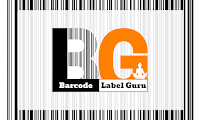What does EAN-13 mean?
European Article Number (EAN 13) Barcode – GS1India
The EAN-13 barcodes are used worldwide for marking products often sold at retail points of sale. The numbers encoded in EAN-13 bar codes are product identification numbers. All the numbers encoded in UPC and EAN barcodes are known as Global Trade Item Numbers (GTIN), and they can be encoded in other GS1 barcodes.
EAN-13 Code can be purchased from https://www.gs1.org/
However we don't always need to purchase Barcode Number if we have a small business.
Let's Discuss When we need to Purchase EAN-13 Code from GS1 Site.
1. Launching Product Nationally, Distribution across India & abroad.
2. Small Business but want to Sell Online on Internation or Nation E Portals like Amazon, Flipcart Etc.,
3. Small Business, But Big Customer Base, Carrying your Packed Products across India & abroad.
4. Making a Brand. With Global Presence.
:: EAN-13 Barcode Structure ::
How to find 13th Check Sum Digit of your EAN Number?
Click here for Check Sum of EAN-13 Code
List of the country codes of the
EAN-13, GTIN-13
EAN-13, GTIN-13
What is EAN 13 barcode format?
European Article Number (EAN 13) barcode format is used in global trade to identify a specific product. Thirteen–digit EAN–13 codes are assigned worldwide to identify items at the point–of–sale. Two– and five–digit codes can be added to the code to identify published works.
What does EAN 13 mean?
An EAN-13 number includes a 3-digit GS1 prefix (indicating country of registration or special type of product). A prefix with a first digit of "0" indicates a 12-digit UPC-A code follows. A prefix with first two digits of "45" or "49" indicates a Japanese Article Number (JAN) follows.
What is a 13 digit EAN code?
Thirteen–digit EAN–13 codes are assigned worldwide to identify items at the point–of–sale. Two– and five–digit codes can be added to the code to identify published works. EAN is similar to the twelve–digit Universal Product Code (UPC), and can be encoded in other barcode types offered by GS1. EAN codes are also known as Global Trade Item Numbers.
What is an EAN number?
The most commonly used EAN standard is the thirteen-digit EAN-13, a superset of the original 12-digit Universal Product Code (UPC-A) standard developed in 1970 by George J. Laurer. An EAN-13 number includes a 3-digit GS1 prefix (indicating country of registration or special type of product).
The International Article Number (also known as European Article Number or EAN) is a standard describing a barcode symbology and numbering system used in global trade to identify a specific retail product type, in a specific packaging configuration, from a specific manufacturer. The standard has been subsumed in the Global Trade Item Number standard from the GS1 organization; the same numbers can be referred to as GTINs and can be encoded in other barcode symbologies defined by GS1. EAN barcodes are used worldwide for lookup at retail point of sale, but can also be used as numbers for other purposes such as wholesale ordering or accounting. These barcodes only represent the digits 0–9, unlike some other barcode symbologies which can represent additional characters.
The most commonly used EAN standard is the thirteen-digit EAN-13, a superset of the original 12-digit Universal Product Code (UPC-A) standard developed in 1970 by George J. Laurer.[1] An EAN-13 number includes a 3-digit GS1 prefix (indicating country of registration or special type of product). A prefix with a first digit of "0" indicates a 12-digit UPC-A code follows. A prefix with first two digits of "45" or "49" indicates a Japanese Article Number (JAN) follows.
The less commonly used 8-digit EAN-8 barcode was introduced for use on small packages, where EAN-13 would be too large. 2-digit EAN-2 and 5-digit EAN-5 are supplemental barcodes, placed on the right-hand side of EAN-13 or UPC. These are generally used in periodicals, like magazines[2] and books,[3] to indicate the current year's issue number and in weighed products like food, to indicate the manufacturer's suggested retail price.
The first three digits of the EAN-13 (GS1 Prefix) usually identify the GS1 Member Organization which the manufacturer has joined (not necessarily where the product is actually made).[6] Note that EAN-13 codes beginning with 0 are actually 12-digit UPC codes with prepended 0 digit. In recent years,[when?] more products sold by retailers outside the United States and Canada have been using EAN-13 codes beginning with 0, since they were generated by GS1-US.
The 020-029 GS1 Prefixes are worth a special mention. GS1 defines this as being available for retailer internal use (or internal use by other types of business). Some retailers use this for proprietary (own brand or unbranded) products, although many retailers obtain their own manufacturer's code for their own brands. Other retailers use at least part of this prefix for products which are packaged in store, for example, items weighed and served over a counter for a customer. In these cases, the barcode may encode a price, quantity or weight along with a product identifier – in a retailer defined way. The product identifier may be one assigned by the Produce Electronic Identification Board (PEIB) or may be retailer assigned. Retailers who have historically used UPC barcodes tend to use GS1 prefixes starting with "02" for store-packaged products.
The EAN "country code" 978 (and later 979) has been allocated since the 1980s to reserve a Unique Country Code (UCC) prefix for EAN identifiers of published books, regardless of country of origin, so that the EAN space can catalog books by ISBNs[3] rather than maintaining a redundant parallel numbering system. This is informally known as "Bookland". The prefix 979 with first digit 0 is used for International Standard Music Number (ISMN) and the prefix 977 indicates
Barcode structure
The barcode consists of 95 areas (also called modules[citation needed]) of equal width. Each area can be either white (represented here as 0) or black (represented as 1). From left to right:
3 areas for the start marker (101)
42 areas (seven per digit) to encode digits 2–7, and to encode digit 1 indirectly, as described in the following section
5 areas for the center marker (01010)
42 areas (seven per digit) to encode digits 8–13
3 areas for the end marker
Encoding of the digits
To encode the 13-digit EAN-13 number, the digits are split into 3 groups; the first digit, the first group of 6 and the last group of 6. The first group of 6 is encoded using a pattern whereby each digit has two possible encodings, one of which has even parity (denoted with letter G) and one of which has odd parity (denoted with letter L). The first digit is not represented directly by a pattern of bars and spaces, but is encoded indirectly, by selecting a pattern of choices between these two encodings for the first group of 6 digits, according to the table below. All digits in the last group of 6 digits are encoded using a single pattern RRRRRR, the one also used for UPC.
If the first digit is zero, all digits in the first group of 6 are encoded using the pattern LLLLLL used for UPC, therefore, a UPC barcode is also an EAN-13 barcode with the first digit set to zero.
EAN-13 barcode example
C1, C3: Start/end marker.
C2: Marker for the center of the barcode.
6 digits in the left group: 003994.
6 digits in the right group (the last digit is the check digit): 155486.
A digit is encoded in seven areas, by two black bars and two white spaces. Each black bar or white space can have a width between 1 and 4 areas.
Parity for the digits from left and right group: OEOOEE EEEEEE (O = Odd parity, E = Even parity).
The first digit in the EAN code: the combination of parities of the digits in the left group indirectly encodes the first digit 4.
An EAN-13 barcode (originally European Article Number), but now renamed GTIN (Global Trade Item Number) even though the abbreviation EAN has been still used by retailers) is a 13 digit (12 data and 1 check) barcoding standard. The EAN-13 barcode is used worldwide for marking products often sold at retail points of sale. The numbers encoded in EAN-13 bar codes are product identification numbers.
What is GTIN?
GTIN (Global Trade Item Number) is a system developed by the GS1 and is an internationally recognized system for identifying products. It is a blanket term to describe various GS1 numbering codes – UPC and EAN. It is, hence, safe to term an EAN-13 code as a GTIN-13. GTIN provides the global supply chain solution for the identification of any item that is traded
Why EAN-13 barcode?
The advent of the EAN-13 barcode is a data structure stepping-stone toward the supply chain control. It is used in global trade to distinguish the product type, specification, etc. In other words, it helps the product be uniquely identified. It is a numeric-only bar code system used for the identification of retail products. Unique numbers are allocated to each separate retail product, not just by product brand but by unique numbers. This assists in positing the products with retailers and e-commerce companies. It facilitates a future where intelligent workflows will fuel data-driven smart supply chains.
The future smarter supply chains continue to not just embrace automation with the help of the EAN -13 barcode, but also use AI to make processes more efficient, responsive, and adaptive. Most importantly the visibility and traceability solutions in the supply chain have gained momentum, these are the “twin engines of sustainable” supply chain.
The EAN-13 barcode has withstood the test of time because it continues to serve a key role in the evolving digital future of retail where the product is identified uniquely and the data it captures will shape decisions affecting customers and retailers.
Components of an EAN-13 barcode number
The first three digits of the EAN-13 serve as the GS1 Prefix. The GS1 prefix usually identifies the GS1 Member Organization which the manufacturer has joined.
The Manufacturer Code is a unique code assigned to each manufacturer by the numbering authority and all products made by a certain company use the same manufacturer code. The product code is a unique code assigned solely by the manufacturer.
The check digit is the last number used to confirm if a bar code was scanned correctly. This additional number is mathematically determined through an algebraic equation to create a checksum.
What is EAN–13 Barcode?
European Article Number (EAN 13) barcode format is used in global trade to identify a specific product.
Thirteen–digit EAN–13 codes are assigned worldwide to identify items at the point–of–sale. Two– and five–digit codes can be added to the code to identify published works.
EAN is similar to the twelve–digit Universal Product Code (UPC), and can be encoded in other barcode types offered by GS1. EAN codes are also known as Global Trade Item Numbers.
The EAN number system details a product’s country of origin. It can also be used for coupons, refund receipts, periodical identification and other uses. Barcodes are unique and can be assigned by manufacturers. The length of manufacturing and product codes may vary. The check digit is used to ensure that the barcode has been read correctly.
EAN–13 Barcode Format
The 13 digit code normally breaks down as follows:
The first two numbers is a country code;
The following five numbers, which are the manufacturing code;
Five more numbers which serve as the product code; and
A single check digit at the end of the sequence.
The first 7 digits — the country code combined with the manufacturing code — make a company prefix.
The bars in EAN and UPC codes often appear similar and follow similar patterns. The only difference is where the readable digits are located.






